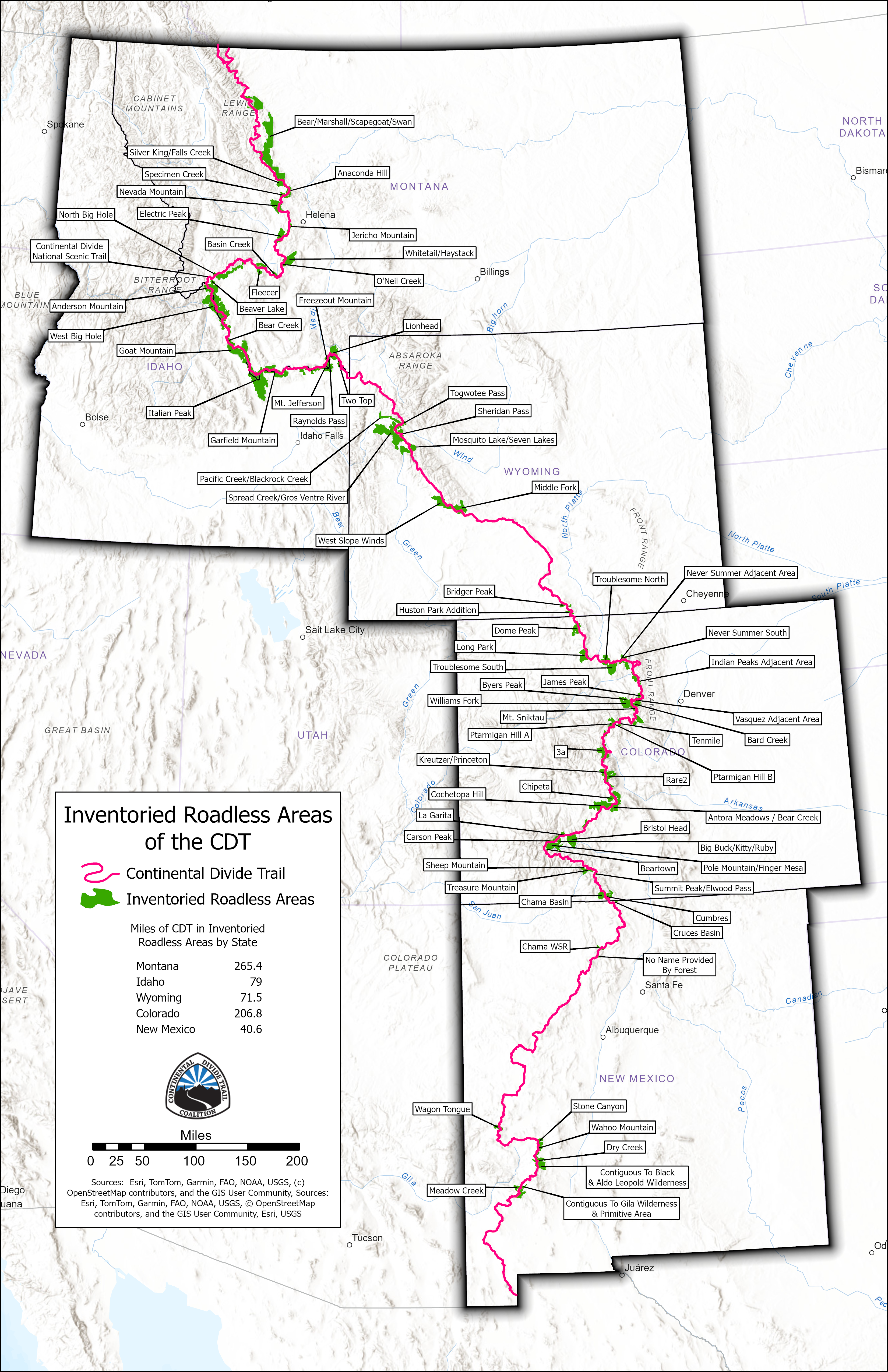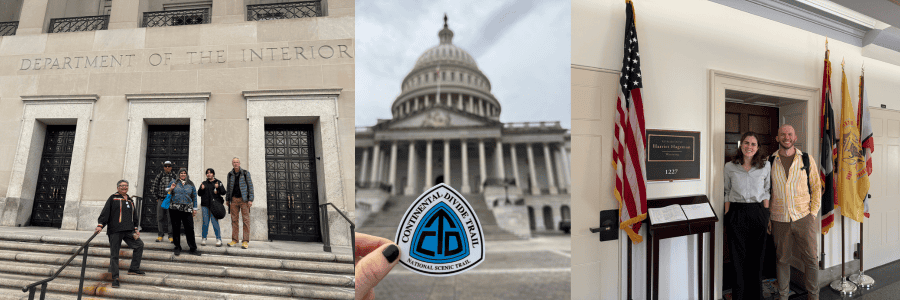As public lands face unprecedented changes and challenges along the CDT and across the country, CDTC’s Advocacy & Policy team will share periodic updates about the bills, Executive Orders, and other actions that we’re tracking. Keep an eye out for these updates to stay informed and learn about ways to speak up in support of the CDT, trails, and public lands. Read our June 2025 update.
What Comes After the “Big Beautiful Bill”
Last month, public land advocates and outdoor enthusiasts across the country successfully defeated a proposal to sell millions of acres of public lands through the budget reconciliation process. However,the final version of the budget reconciliation bill that was signed into law on July 4, also known as the “Big Beautiful Bill,” included several provisions that will harm public lands and the CDT.
Increased Oil & Gas Extraction on Public Lands
The bill makes it easier for companies to lease public lands for oil and gas with limited input from local communities by requiring the Bureau of Land Management to offer more land for oil and gas leasing, removing fees for private companies, and allowing corporations to pay to rush assessments of environmental impacts. Many locations near the CDT, particularly in New Mexico and Wyoming, may be vulnerable to increased oil and gas development as a result of these changes. Particularly with limited chances for CDTC and the public to weigh in on these processes or offer ways to mitigate impacts to the trail, this development could fundamentally change the scenery and remote feel of the CDT in these areas.
Sharp Funding Cuts for Land Management Agencies
Strikingly, the bill rescinded $267 million in funding previously allocated for the National Park Service staffing. As public lands across the country face record levels of visitation and already reduced staffing levels, this cut has the potential to further jeopardize visitor safety and enjoyment. The bill also rescinded the remainder of $500 million allocated in 2022 for conservation, climate resilience, and habitat restoration projects on lands administered by the Bureau of Land Management and the National Park Service. As places that are managed for multiple uses, public lands are not only places for recreation and enjoyment, they are at the heart of preserving biodiversity and intact landscapes, and these cuts undermine federal agencies’ ability to steward them.
Recission of the Roadless Rule
 In late June, Secretary of Agriculture Brooke Rollins announced that the Department of Agriculture is rescinding the 2001 Roadless Rule. Developed during a process that included over 600 public hearings and gained 1.6 million supportive comments, the Roadless Rule protects 59 million acres of Inventoried Roadless Areas (IRAs) in national forests from road construction and, by proxy, from large-scale logging and other extractive activities.
In late June, Secretary of Agriculture Brooke Rollins announced that the Department of Agriculture is rescinding the 2001 Roadless Rule. Developed during a process that included over 600 public hearings and gained 1.6 million supportive comments, the Roadless Rule protects 59 million acres of Inventoried Roadless Areas (IRAs) in national forests from road construction and, by proxy, from large-scale logging and other extractive activities.
Over 440 miles of the Continental Divide Trail run through IRAs, protecting the pristine mountain views, wildlife and ecosystems, and the remote experience of nature that are at the heart of these areas. Rescinding the Roadless Rule will irreversibly impact not only these landscapes, but also the cultures, economies, and livelihoods of nearby communities who depend on protected public lands for tourism and enjoyment.
Roadless Areas and Wildland Fire
Research does not support the Department of Agriculture’s statements that removal of the roadless rule will improve fire prevention on national forests. Wildfires are four times more likely to ignite in areas with roads, and less than half of the Inventoried Roadless Areas are in locations categorized as being at high risk for wildfire. Instead of mitigating fire risk, rescinding the Roadless Rule could increase wildfire impacts to rural communities, harm outdoor recreation industries, and fundamentally change large sections of the CDT.
Executive Orders 14313 and 14314
Last week, President Trump issued two Executive Orders (EOs) focused on public lands.
- EO 14313, “Establishing the President’s Make America Beautiful Again Commission,” creates a commission of representatives from several government agencies, tasked with coordinating conservation efforts across agencies, encouraging volunteer-driven conservation efforts, and “cutting bureaucratic delays that hinder environmental management.” The Executive Order describes this as an effort to build upon the legacy of the Great American Outdoors Act, signed during President Trump’s first term.
- Executive Order 14314, “Make America Beautiful Again by Improving Our National Parks,” directs the Secretary of the Interior to increase entrance fees at national parks for visitors who are not residents of the United States in order to increase revenue and improve park infrastructure. The Executive Order also directs the Secretary of the Interior to fully implement the Legacy Restoration Fund (LRF) in national parks. Established as part of the Great American Outdoors Act, the LRF directs revenue from energy production towards addressing overdue maintenance projects on public lands.
The Great American Outdoors Act was a once-in-a-generation investment in public lands that received strong bipartisan support, and CDTC is eager to see how both of these Executive Orders amplify the impact of the law. However, strong staffing and funding for land management agencies is fundamental to ensuring that public lands, including the CDT, remain safe, enjoyable, and accessible for visitors. We cannot overlook that recent widespread funding, staffing, and programmatic cuts at the US Forest Service, the National Park Service, and the Bureau of Land Management will complicate implementation of these Executive Orders.
Amidst all of these emerging topics, we’re continuing to track and advocate for two pieces of legislation that could have huge beneficial impacts on the CDT – the CDT Completion Act and the America the Beautiful Act. Each bill would make the CDT safer, more enjoyable, and more accessible for thru-hikers, visitors, and community members. Sign up for CDT Advocacy Alerts to stay informed as we track the progress of these bills and to be alerted about opportunities to speak up for the trail!

